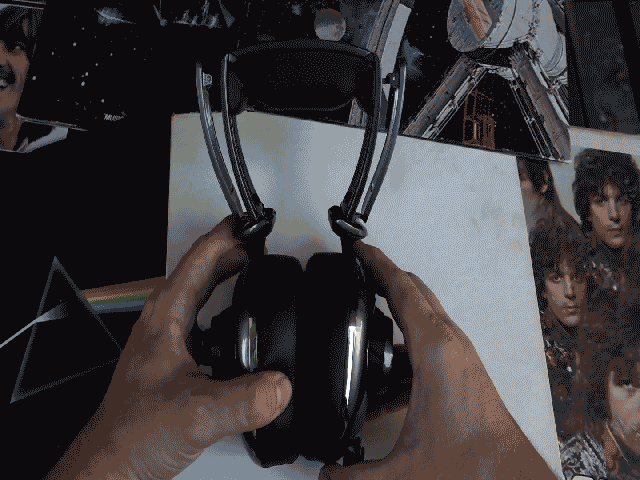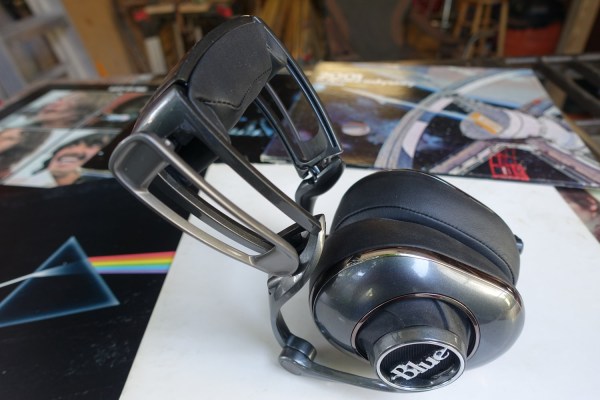No one will ever mistake the Blue Mo-Fi for Beats headphones. From the design to the amplified sound, the Mo-Fi headphones serve up a new perspective on the now-ubiquitous consumer electronic.
Over-the-ear headphones are enjoying a renaissance of sorts. Where a few years ago white earbuds used to be a status symbol, massive headphones are now the status quo thanks mostly to Beats Electronics. Circumaural headphones never really disappeared since their introduction decades ago, but until recently, they were relegated to use in listening rooms, studios and DJ booths where powered amplifiers provided enough oomph to move the large drivers behind the cans. Now, thanks to the rise of mobile electronics, the large ‘phones are being used everywhere from subways to sidewalks to gyms.
For the most part, the Beats generation of headphones do an alright job pumping the tunes. But no one has called the sound audiophile quality — and that’s mostly do to the weak amplifiers found in the mobile devices driving these headphones.
Blue took a different approach to their first set of headphones. The Mo-Fi includes a battery-powered amplifier built into the ear cups to properly power the 50mm drivers. This approach takes the load off the mobile device, allowing the sound to be outputted at a comfortable 30% – 40%. Blue says this lets the compressed audio breathe a bit more.
Enthusiasts have long turned to headphone amplifiers to provide a bit more power to mobile devices. But these require another device and another cable and another set of batteries. It’s not ideal.
[gallery ids="1048459,1048466,1048465,1048464,1048463,1048462,1048461,1048460"]
The Mo-Fi merges the amp with the headphones.
I found the amp built into the Mo-Fi made a difference in the audio fidelity of streaming music. Songs from Rdio suddenly sounded more full and alive. FLAC quality? Nah, but the audio is certainly improved. However, since there’s now a powered amplifier in the mix, there is a touch of electronic white noise when no audio is present.
Blue says the battery powering the Mo-Fi will last 12-14 hours and takes 3-4 hours to recharge through microUSB. I used the headphones for a week and after a single charge, didn’t have to recharge them once. This is mostly thanks to a smart feature that detects when the headphones are not in use and powers down the amplifier.
Even when it’s not charged, the headphones will still pass audio, albeit not through the amplifier so it’s a touch underwhelming.

The Mo-Fi’s employ a new take on the headphone design, too. Instead of simply cloning a Beats model, Blue designed something spectacular. The headphones are unlike anything else on the market.
A four-point hinge allows the ear cups to expand parallel no matter how bulbous the wearer’s head happens to be. Blue says this improves audio isolation. Another set of hinges allows the ear cups to pivot downward, rather than sliding down like on most headphones. The differences are subtle when in use, but rather striking, allowing the headphones to sit perfectly.
The whole package is rather unwieldy, though. Don’t expect to stuff these in your messenger bag and not look like you’re carrying around a football.
The result of the unique ergonomics and inclusion of an amp culminates in a novel set of $350 headphones. The audio quality is not audiophile-grade but it’s certainly better than the majority of the mass market oversized headphones on the market. The large size of the headphones seem to state they’re going to be tied to a desk. For that kind of cash, a person could buy better quality audio from Audio-Technica, Sennheiser, or Denon. But if you’re shopping against a set of Beats, opt for the Blue Mo-Fi headphones and enjoy the clever styling and amplified sound.
